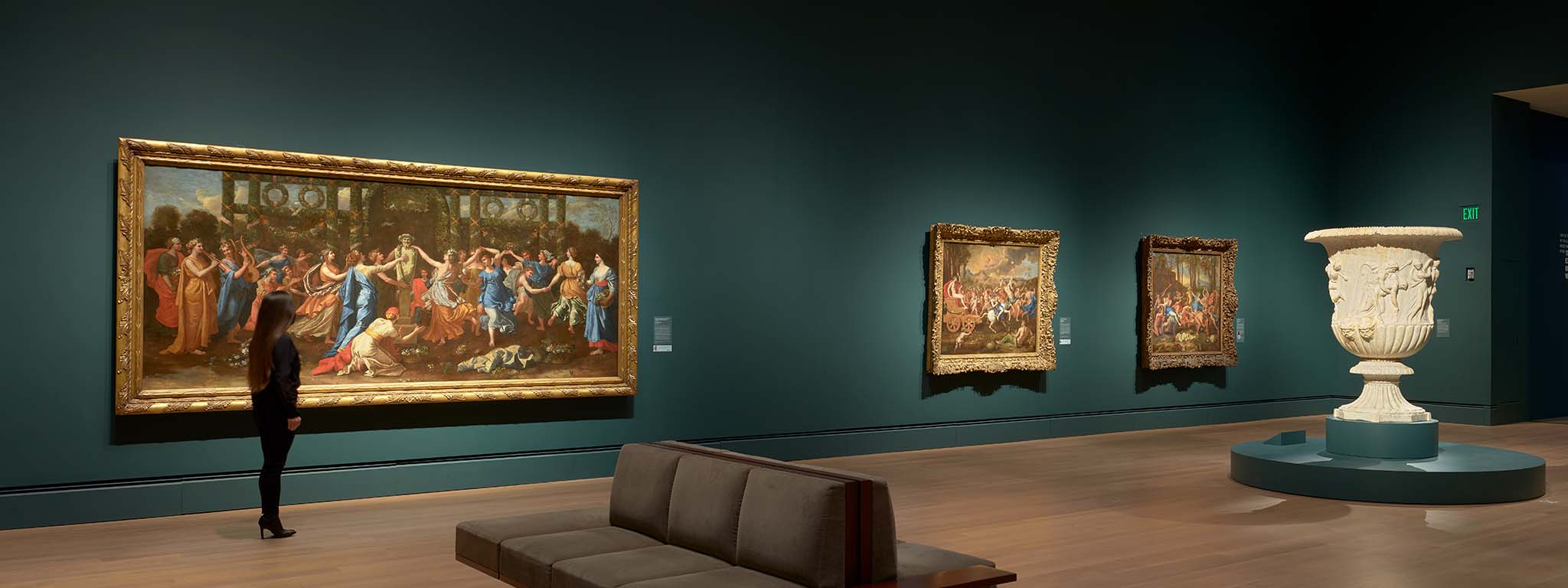Poussin and the Dance
Nicolas Poussin (1594–1665) was the most influential French painter of the seventeenth century, and his work has been a touchstone for artists ever since. He developed a style that was at once new and old: fresh in its approach to movement and composition but also powerfully inspired by ancient Greek and Roman sculpture. Born in Normandy, Poussin began his career in Paris before traveling, at age thirty, to Rome—the center of the European art world. There, dance emerged as a key theme in his art. Drawing inspiration from classical relief sculptures, he imagined ancient rites and revels as dancers, depicting woodland gods and their worshippers in wild, festive motion.
Portraying dance gave Poussin an opportunity to work through the quintessential painter’s problem of arresting movement, to explore the expressive potential of human form, and to devise new methods of arranging bodies in space. He carried lessons learned from dance into every corner of his production, using a toy theater populated with wax figurines to stage the compositions he drew and painted. It is no accident that the word “ballet” is commonly used to describe Poussin’s battle pictures. He approached dramatic action with a choreographer’s eye.
This exhibition examines Poussin’s dancing pictures through the dual lens of art history and contemporary dance, bringing together paintings and drawings made in seventeenth-century Rome with newly commissioned dance films made here in Los Angeles. The goal is to offer multiple perspectives: a minder that the meaning of a work of art, whether old or new is always alive and evolving.
Invitation to the Dance
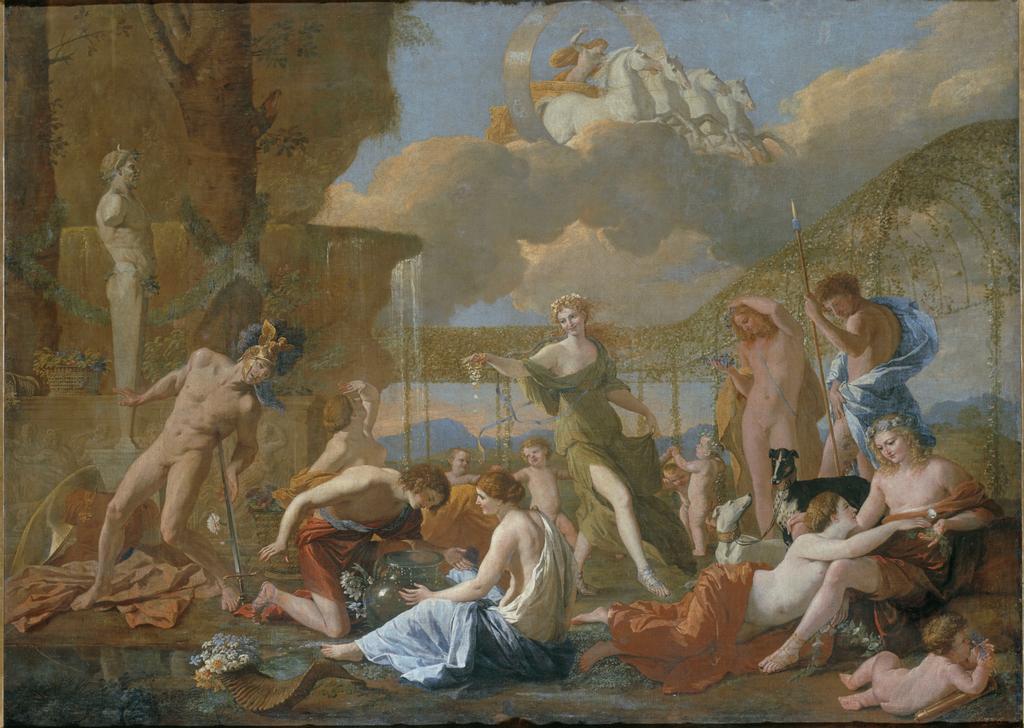
Arriving in Rome in 1624, Poussin was surely dazzled by the treasures of the Eternal City: ancient sculptures that stood in its gardens and courtyards. Renaissance paintings that graced its palaces and churches and new works by artists such as the sculptor Gian Lorenzo Bernini (1596–1669), whose sumptuous, operatic manner was coming into vogue.
Poussin had followed his patron, the poet Giambattista Marino (1569–1625), to Italy. Under Marino’s protection, Poussin explored classical mythology, poring over Ovid’s first-century poems the Metamorphoses and the Fasti. These stories of love and transformation would provide a wellspring of subject matter for his first decade in Rome. But Marino left the city shortly after Poussin arrived. A stranger in a strange land, the painter struggled to find new patrons, while facing poverty and illness.
His devotion to antiquity only deepened. While sketching and measuring ancient statues, he attracted the interest of Cassiano del Pozzo (1588–1657), a learned antiquarian. Cassiano’s patronage and friendship helped steady Poussin’s career and informed his stylistic development around 1630, as he shifted from the sensuous, painterly approach to a more sober, sculptural manner. His new style contradicted contemporary fashion but proved a lasting contribution to the history of art.
Poussin the Draftsman
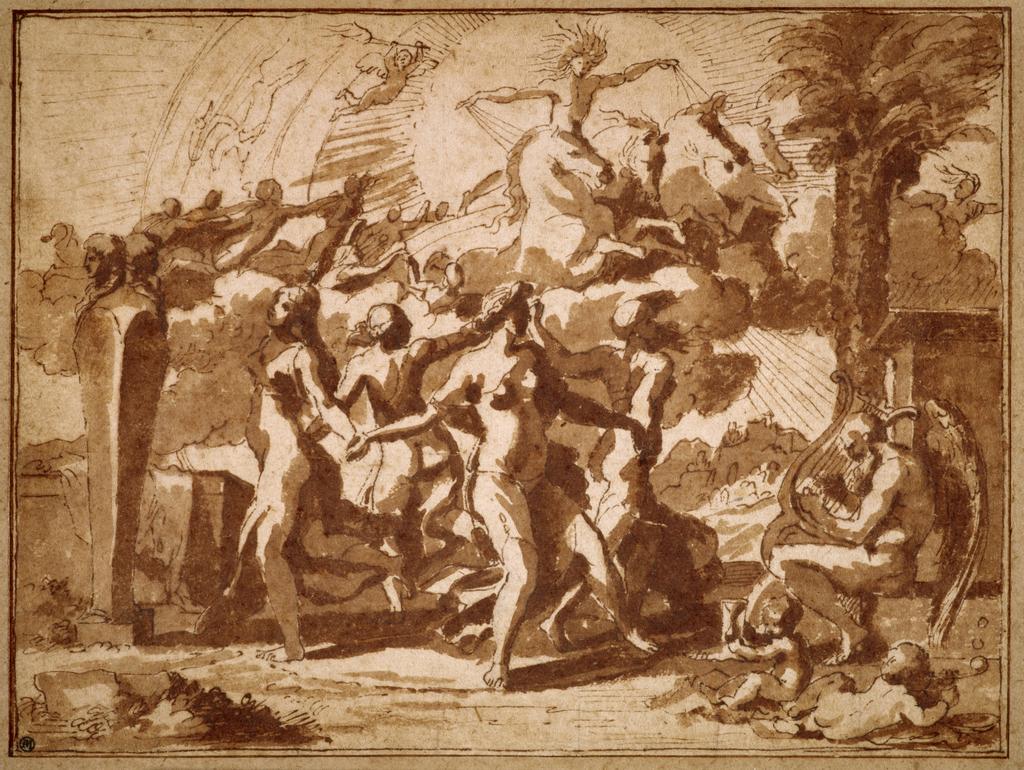
Poussin’s contemporaries tell us that he sketched constantly, and many highly finished drawings, often after ancient objects, testify to his skill as a draftsman. A number of these drawings arose from the artist’s friendship with Cassiano del Pozzo. An antiquarian and natural scientist, Cassiano is best remembered for amassing the Museo Cartaceo (Paper Museum), a collection of over ten thousand drawings and prints that comprised an encyclopedia of ancient sculpture, architecture, and visual culture (as well as botany, zoology, and geology). Poussin became a collaborator in this undertaking: he consulted and contributed to the Paper Museum, and in doing so, he deepened his intimacy with the ancient world.
Curiously, Poussin seldom used drawing truly to invent—that is, to generate wholly new concepts on paper. Nor do his surviving preparatory drawings follow the progression one might expect, from compositional sketches to life studies of individual figures to full-scale paper cartoons. Instead, Poussin made schematic drawings of faceless figures, carefully arranged and lit. He generally worked out these compositions using wax models formed with his own hand and arranged in a diorama. Several drawing presented here reflect his use of this tool: a replica appears in the exhibition.
Animating the Frieze
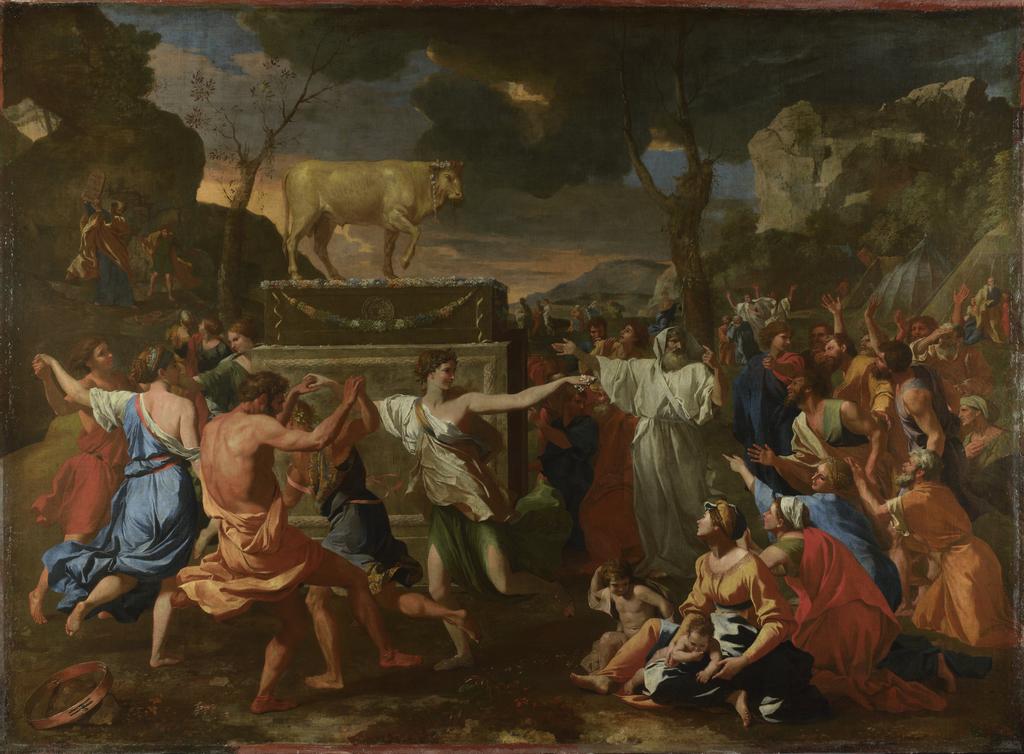
In the 1630s Poussin developed an international reputation closely tied to his portrayals of dancing subjects. Receiving commissions of increasing size and importance, he choreographed imaginary dances of increasing complexity. Whereas his paintings of the 1620s often featured a dancing figure or two, he now organized whole compositions around large groups of dancers arranged in overlapping, interlacing poses.
One motif he explored in depth during this period was the ring of dancers clasping hands and moving in concert. For these works Poussin drew inspiration from a specific ancient Roman relief sculpture, a rhythmic frieze of five figures holding hands known as the Borghese Dancers. Working with his wax figurines, Poussin used this basic concept as a point of departure for many permutations: dizzy rounds and decorative garlands of raucous revelry and frozen movement.
Dances for Richelieu
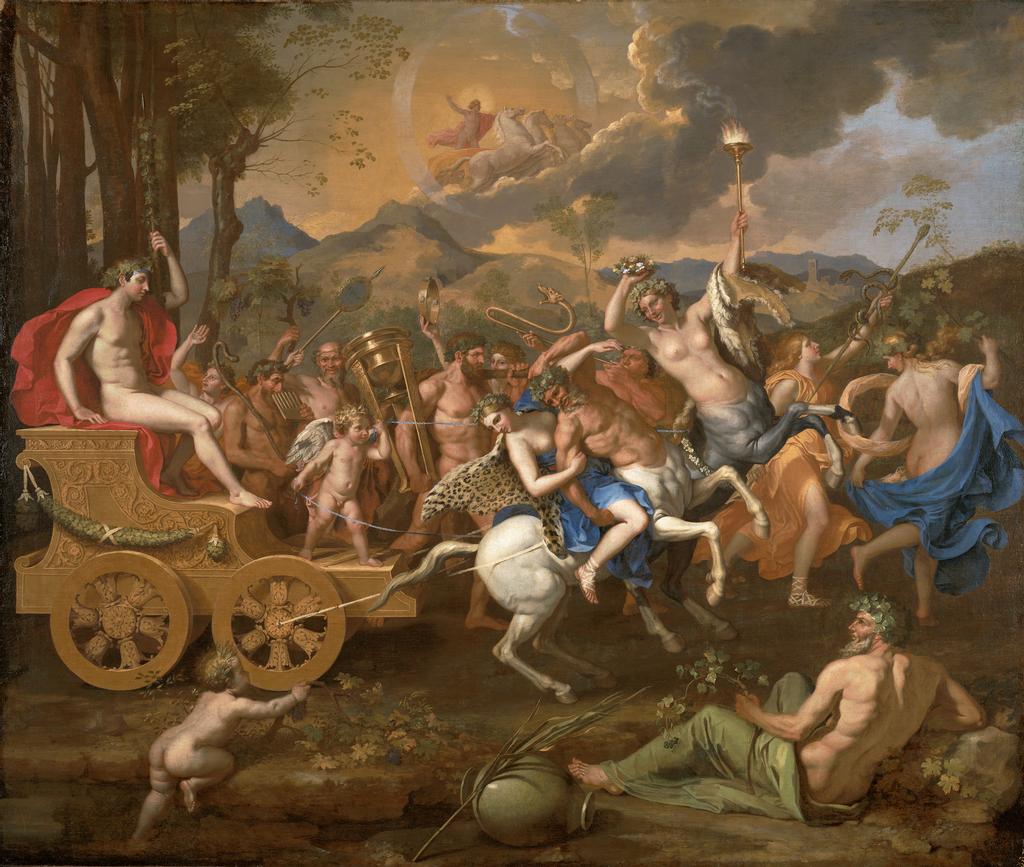
In 1635 Poussin received a momentous commission: to paint a suite of bacchanalian triumphs for the most powerful man in France. Armand Jean du Plessis, Cardinal de Richelieu (1585–1642). Made in Rome and shipped to France, these “crazed dances” (as one early biographer called them) were packed with antiquarian details. They impressed Richelieu and cemented Poussin’s reputation in his native land as a learned painter and a rival of Italian Renaissance masters.
As first minister to Louis XIII (ruled 1610–1643), Richelieu was the architect of French domestic and foreign policy, as well as a voracious collector who used art patronage to advance ambitions both personal and national. In the 1620s he constructed a castle in central France, the Château de Richelieu, which he filled with art and surrounded with a town built from scratch.
The château contained some 250 sculptures, including classical antiquities and works by Michelangelo, as well as architectural decorations by eminent French painters. The crown jewel was the Cabinet du Roi (king’s apartment), which contained paintings of mythological and allegorical subjects by the Italian Renaissance artists Andrea Mantegna, Pietro Perugino, and Lorenzo Costa. These were interspersed with Poussin’s triumphs in an installation that proclaimed the French painter’s mastery.
Choreographing Violence
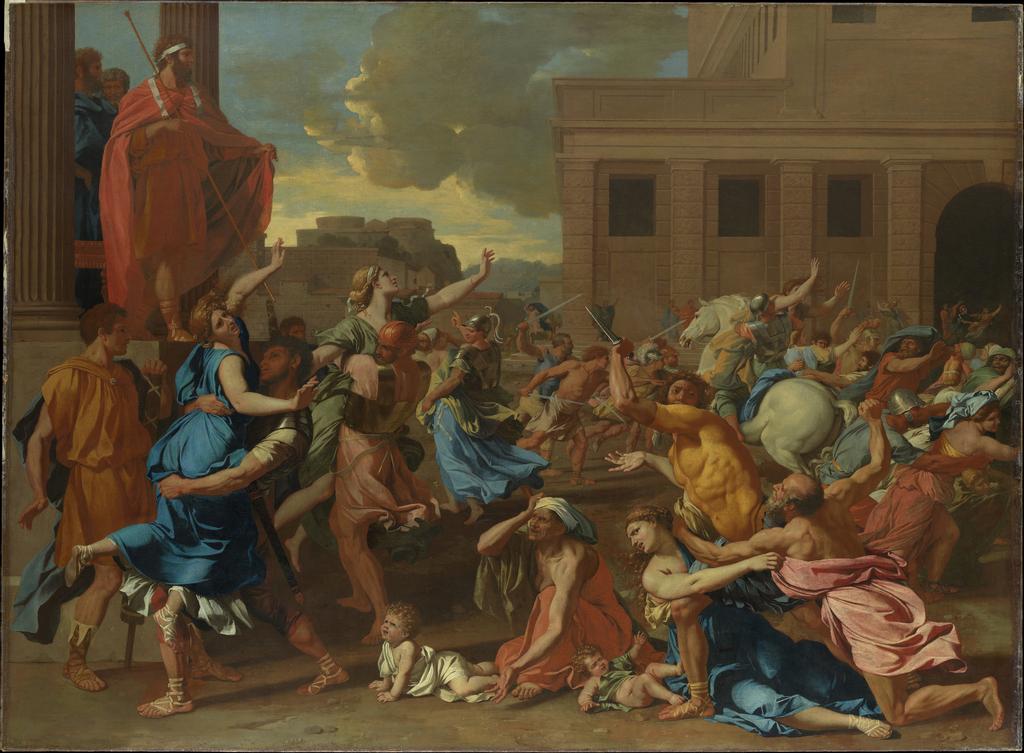
Dances were not all Poussin painted. He treated a range of biblical and mythological subjects as well as scenes from Roman history. Among his most remarkable works are two pictures portraying the abduction of the Sabine women, a story recounted by the ancient historians Plutarch and Livy and by the poets Virgil and Ovid: the newly founded city of Rome lacks a female population, so King Romulus and his men kidnap women from the neighboring Sabine people. Commonly known as the “Rape of the Sabines” (from the Latin raptio, “kidnapping”), the story is one of abduction for the purpose of sexual assault.
Poussin’s depictions of this theme are obviously images of violence, not dancing. Yet their complex choreography has attracted endless comparison to ballet, whose seventeenth-century roots were entwined with military training. Poussin worked out his two various within a brief period, shifting his wax figurines like pieces on a chessboard to make preparatory drawings and, finally paintings. As a group, these works help us see how the disposition of bodies in space can affect our understanding of a story, creating a sense of chaos or order.
Poussin’s Grande Machine
Poussin’s contemporaries tell us that he planned his compositions using wax models that he made himself and arranged in a purpose-built box. The German painter Joachim von Sandrart (1606–1688), who was friendly with Poussin in Rome, observed that “he placed little wax figures as they would be grouped in the painting, one beside the other, gave each its requisite pose, and dressed them with wet linen, to see what the image would look like.” Years later the French painter Antoine Le Blond deLa Tour (1630–1706) offered an even more precise account:
"He dressed them in clothes suited to the figures he wished to paint, forming the draperies with the tip of a little stick…making their heads, feet, hands, and nude bodies…with soft wax, which he handled with a singular swiftness and ease, and having expressed his ideas in this fashion, he erected a box…enclosing all sides snugly….And at last he made a little opening at the front…fashioned so carefully as to prevent any stray light from getting in, for he closed [the opening] with his eye, looking through to draw his picture."
Conversations in Dance
As the contemporary choreographer Ana-Maria Alvarez has observed, “Dances have always begun with people moving together in community, moving their bodes as a way to make sense of the world, to feel more connected to one another, to tell stories.” The dance films presented in the exhibition belong to that tradition. Commissioned from Los Angeles-based choreographers, these works engage Poussin in a conversation across centuries—exploring the structure of his compositions, finding connections between is paintings and contemporary dance innovations, reimagining the world of the Sabine people before the Roman attack, and challenging the painter’s position of cultural authority. Here, painted bodies and frozen gestures give way to living dancers, moving individually and together, telling stories, and making meaning.
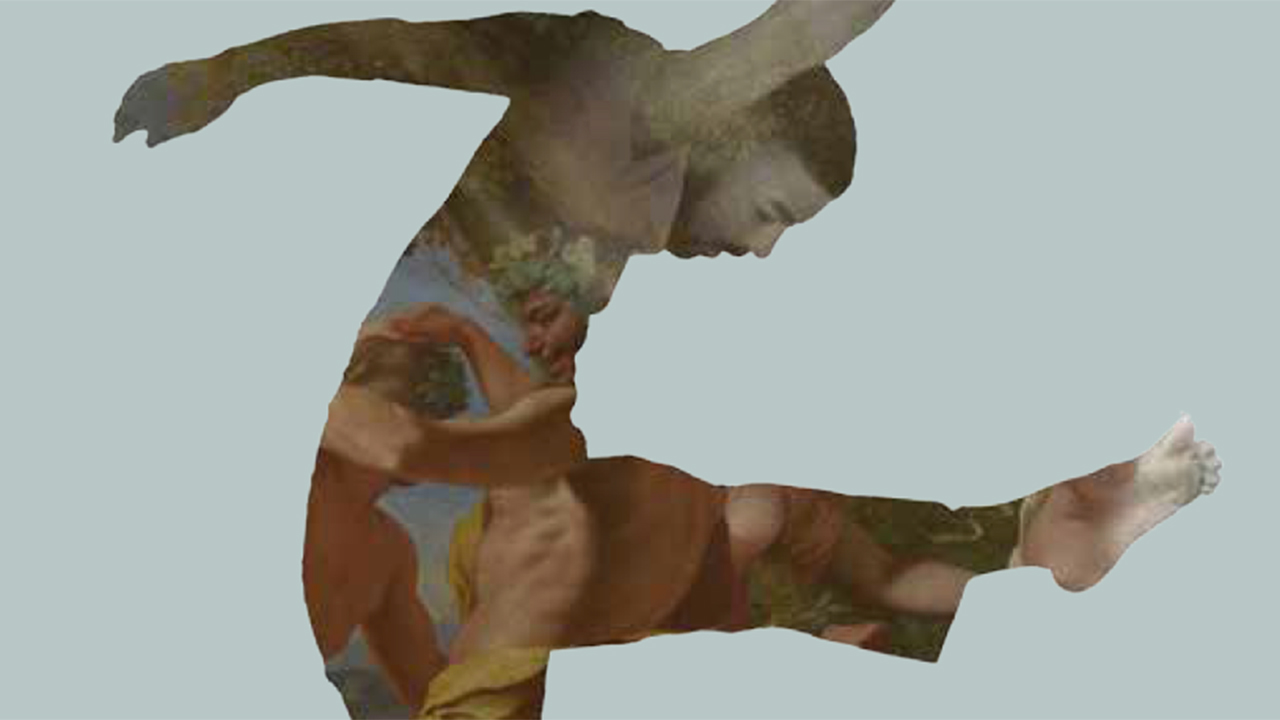
Films
Represented in the exhibition by one-minute clips, all three films can be viewed in their entirety online.
This exhibition has been organized by the J. Paul Getty Museum, Los Angeles, and the National Gallery, London.
